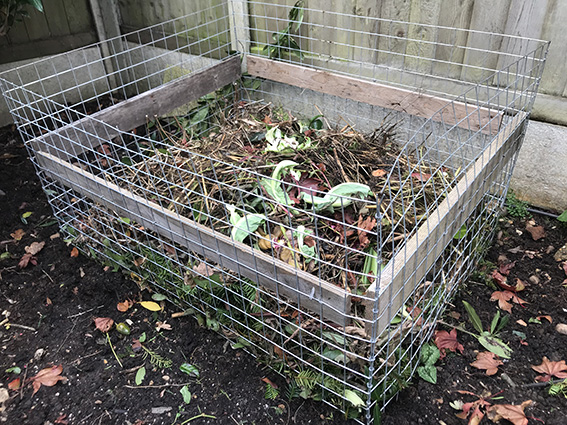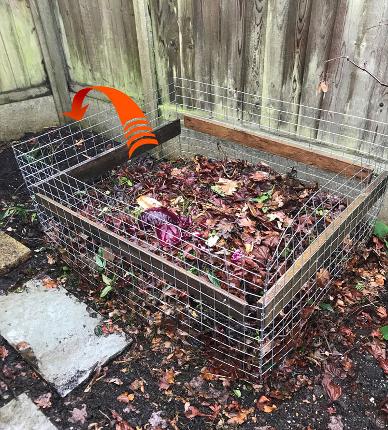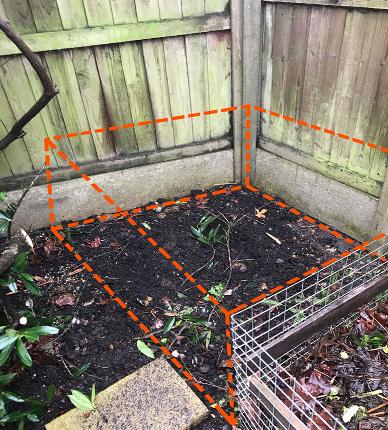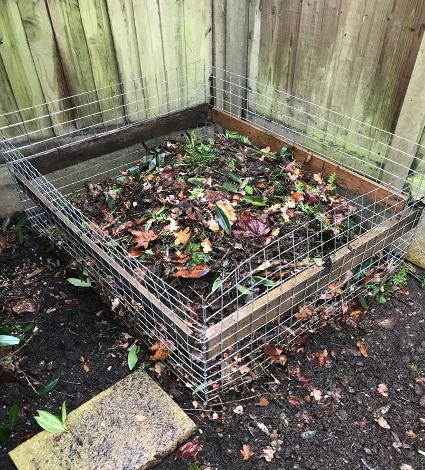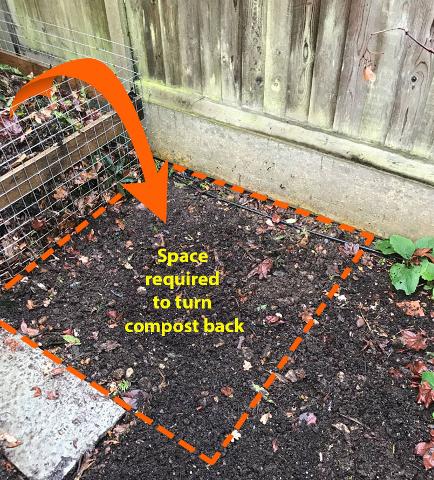Composting in smaller suburban Gardens 'January update'.
Back in early November I wrote a blog on ‘my first foray into garden composting' (see links at the bottom of this blog). This was driven by two factors, these being the fortuitous delivery of a wire cage (from a garden designed early last year) and the local councils plan to reduce the number of collections of garden waste in my Essex village.
As I mentioned at the time, allowing space for a compost heap in any relatively small garden is quite extravagant and uses up valuable design real estate. I therefore prefer to advocate the ‘once a year' bulk purchase of vastly superior, ready-made compost.
Nonetheless, this year with the two issues aligning, I decided to look at the possibilities.
Well, as the earlier blog mentions the theory started off perfectly and the wire cage was great in terms of confining the exercise to a specific area. Over the next three weeks I collected what I hope will be a good balance of Carbon and Nitrogen elements and began filling the cage.
The moisture element has also been dealt with as, so far, we've had a pretty damp time of it in my part of Essex
At the time, opinion was split as to how often you turn the heap to aerate it. Some websites say turning it every 2 to 4 weeks works best with smaller compost heaps, whereas the well-known, curly haired, BBC garden presenter suggested only 3 times throughout the whole 18-month process, albeit this was for a ‘gargantuan' sized compost container!!
Anyway, we are now in 2022 so decided to see how the composting process was working and in addition, see how effective the wire cage design idea was going to work.
So, as a refresher, the idea was rather than have two compost bins it was to use the same bin lifted and moved over to a near position and the compost turned into the new position shown by the red dotted line.
For this I had to clear the new position adjacent to the existing position of overhanging foliage of a Laurel shrub, but this was pretty much an unused area anyway being right in the deepest corner of my plot. Once cleared the new position was an exact fit for the wire cage once moved.
I then proceeded to lift the cage off of the existing heap, which left a very neat ‘rectangular shaped' compost heap and placed it down adjacent to its existing position. As the cage was super-light, I'm ‘chuffed' to confirm it worked perfectly!!
Then turning the compost into its new position, was easy taking about 2 minutes. What was originally on the top was now on the bottom of the new heap. Perfect!!... The idea using this method appears to be an efficient solution?
However, you do have to leave the space it originally occupied free to turn it back. This is still only accounts for roughly 2 square metres in total.
Now for the “fact checks” …
The wire cage was approximately 1.1m x 0.95m and about 700mm deep. For this first incursion into the world of composting I filled the cage to the top, but this reduced as I chopped up the material and it'll obviously, break down further leaving me with considerably less as the composting process gets underway.
In addition, evergreen material was part of the mix, and this will take longer to break down, which was evident as the evergreen material at the base of the compost heap was still very much green, whereas the deciduous leaf material was already decomposing nicely, apart from possibly the oak leaves.
So, in conclusion, turning the heap after only 6 weeks wasn't showing much evidence of decomposition. This, however, does allow me to continue filling the heap for longer as I start to clear away more of the herbaceous borders, which I'd left longer into the winter season for structurally aesthetic reasons.
This slower decomposition is also due to the lower temperatures, which will accelerate as the winter moves more towards spring and heat starts to build in the next 6 weeks.
In summary, would I advocate a change in direction from the bulk purchase of compost???..... for me (the owner of a smallish suburban garden in Essex), definitely not!! The main reasons being;
- I may be sacrificing my ‘green fingered' credentials at the altar of convenience, but from my garden I wouldn't generate anywhere like enough compost to effectively mulch all my borders every year.
- Commercially produced compost, from the supplier I use, arrives within days of ordering it.
- It is super organic material with high nutrition values
- Its cost effective. 1000 litres of compost, which is enough to cover all my garden borders is around the £115 mark.
- It also takes up no space in my garden apart from just after its delivered in a convenient ‘dumpy' bag.
Over time I may generate enough to use in my green house for the propagation and ‘potting on' of new plants but certainly not in time for 2022.
If you happen to have more space, more material and are in not so much of a hurry, then I think the wire cage option does have its merits, especially if you had several cages!!
How it all started
https://www.gardencreationbygarycurtis.co.uk/gardening-blog/composting
and how it ended up...
https://www.gardencreationbygarycurtis.co.uk/gardening-blog/first-foray-compost-result

